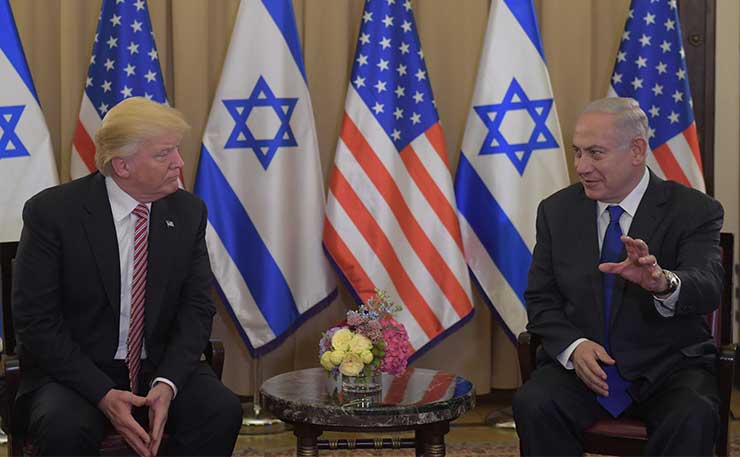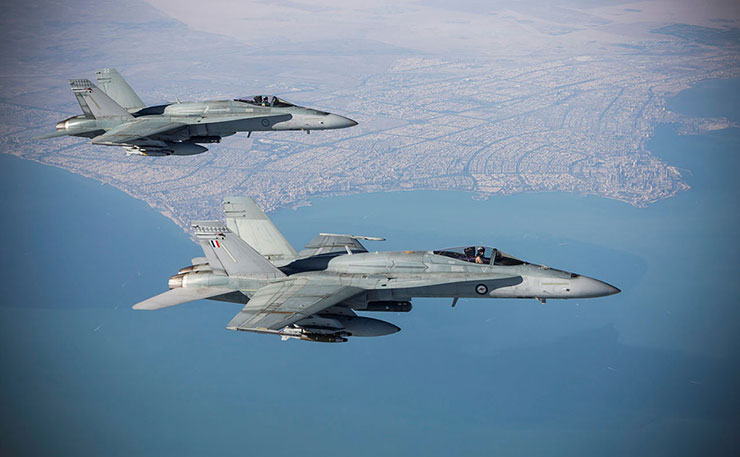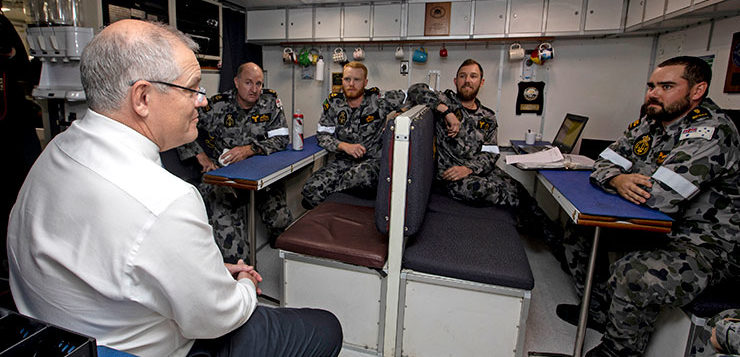You might think the threat of war is lower than ever. The opposite is true, writes Professor Joseph Camilleri.
Recent revelations of Australian arms exports to the Middle East have rightly provoked widespread consternation. But this is no sudden aberration. Nor is it a uniquely Australian phenomenon.
Ours is a world of expanding military budgets, soaring arms sales, deeply entrenched conflicts, and large-scale military interventions. The result: humanitarian disasters, record numbers of forced displacements, immense damage to the natural environment, and the use of a nuclear weapon now more likely than at any time since the worst days of the Cold War.
In all of this, Australia has chosen to be either passive spectator or willing accomplice.
The predicament we’re in has not occurred overnight. The brief honeymoon in Russo-American relations that ushered in the end of the Cold War is now little more than a distant memory.
With the disintegration of the Soviet Union and collapse of Russia’s economy and combat capability, US military spending dipped considerably but not for long. By 2010, the US defence budget reached the astronomical figure of $768 billion. A modest decline during the Obama years has since been reversed. When we add to the Pentagon budget the outlays for other security agencies, in particular Veteran Affairs, total security spending will exceed $1 trillion in 2019.
Though starting from a much a lower base, other governments have also embarked on a military spending spree. In 2017 worldwide military budgets reached $1.7 trillion. Chinese military spending, estimated at $228 billion, had increased 110 per cent since 2008, with Russian and Indian spending growing by 36 and 45 per cent respectively.

The orgy of military spending inevitably means vastly increased arms sales. As military budgets go up, so do military imports and military manufacturing capacity. A roaring arms trade is now worth over $100 billion a year.
The biggest sellers by far are the large US corporations, followed by their Russian, French, German, Chinese and UK counterparts. As for importers, Saudi Arabia is top of the list, followed by the UAE, Australia, Iraq and Taiwan.
As if to establish its credentials in the arms trade, last year the Australian government unveiled plans to become one of the top 10 arms exporters. A $3.8 billion Defence Export Facility, to be administered by the Export Finance and Insurance Corporation, is to provide the finance to Australian companies to help them sell their weapons overseas.

Recent reports suggest that Australian weapons manufacturer EOS has received more than $36 million in government assistance (taxpayers’ money). According to documents seen by the ABC, EOS has struck a deal to supply weapon mounts to Saudi Arabia, the leader of the coalition in war-torn Yemen, which has conducted indiscriminate airstrikes on civilians, which are widely considered to constitute war crimes.
And now comes the revelation (arising from a US Congressional inquiry) pointing to communications between Trump administration officials and nuclear power companies eager to ‘reap billions of dollars through contracts associated with constructing and operating nuclear facilities in Saudi Arabia.’ Mr Trump is reportedly ‘directly engaged in the effort’.
Assuming these reports to be accurate, the implications are deeply troubling. Once Saudi Arabia is suspected of harbouring nuclear weapons ambitions, Iran would immediately follow suit. Within a few years, the world’s most unstable region would have three nuclear armed states: Israel, Saudi Arabia and Iran – a recipe if ever there were one for a regional nuclear conflict with incalculable global repercussions.
It should also be noted that the production, acquisition and transfer of arms represent a pernicious misallocation of human and financial resources, a profound disregard for the cries of the poor and the cries of the Earth.
The new militarism is also paving the way for a renewed nuclear arms race. The US has announced a massive nuclear modernisation program estimated to cost over $1.2 trillion over the next 30 years. US Land, air and sea based nuclear delivery systems will be upgraded, the stockpile of nuclear warheads refurbished, and new infrastructure built for nuclear weapons production.

Plans are also under way to enhance America’s global system of command, control and communications facilities, in which Australia plays a critically important role.
For its part, Russia is close to completing a decades-long effort to renew its nuclear arsenal. It has deployed 80 new intercontinental ballistic missiles ICBMs, put into service 120 submarine-launched ballistic missiles on nuclear-powered submarines, modernized its fleet of strategic bombers, and will soon deploy the new heavy ICBM, Sarmat.
Geopolitical rivalries aside, other driving forces are at work. One is the addiction to the power nuclear deterrence feeds. In the name of deterring aggression, nuclear armed states continue to justify the construction of a vast scientific-bureaucratic-industrial apparatus whose tentacles reach virtually into every corner of society, and which powerful nuclear lobbies are able to leverage virtually at will.
The recent US decision to withdraw from the Intermediate Nuclear Forces (INF) Treaty, is an ominous sign of things to come. The Russian Government has since announced it would retaliate by withdrawing as well. The INF was a landmark nuclear disarmament treaty that paved the way for the end of the Cold War.
Taken together these developments suggest we are entering a new age of extreme militarism, a phenomenon which takes us back to the Cold War, and to what E. P. Thompson famously described as ‘exterminism’. He had in mind societies whose ideologies and political and economic institutions were relentlessly driving towards ‘the extermination of multitudes’.
Those of us who thought the dangers of war had receded need to think again.
In Australia, the silence of our mainstream media is outdone only by the obfuscations of our political parties. Both government and opposition continue in their unthinking acceptance on the US military alliance at a time when US policy is dangerously adrift. They remain ready to participate in distant military adventures without UN authorisation. They invest heavily at taxpayers’ expense in state-of-the-art military technology that bears no relationship to any foreseeable security threats. And they use or threaten force against asylum seekers fleeing war and persecution.
Clearly, Australia needs a new narrative that breaks free from the current state of virtual political paralysis and sets out more promising directions informed by the failings of past and present policies.
Such a narrative cannot be constructed overnight or from the top down. It can only emerge organically from the sustained efforts of civil society to move towards a just and ecologically sustainable peace. Such an undertaking cannot be pursued in isolation, but in tandem with similar efforts around the world.
Donate To New Matilda
New Matilda is a small, independent media outlet. We survive through reader contributions, and never losing a lawsuit. If you got something from this article, giving something back helps us to continue speaking truth to power. Every little bit counts.




